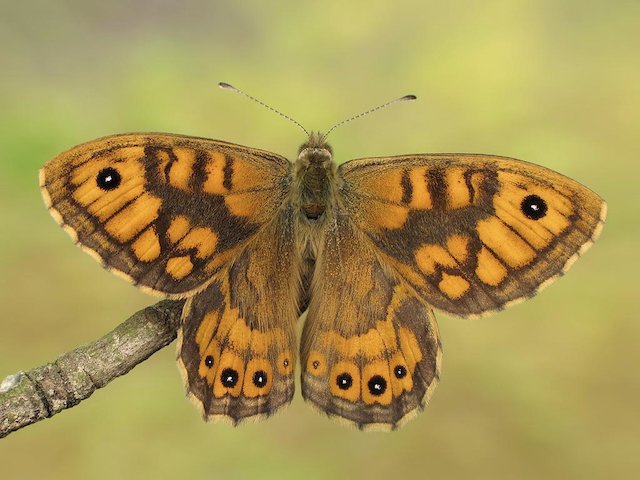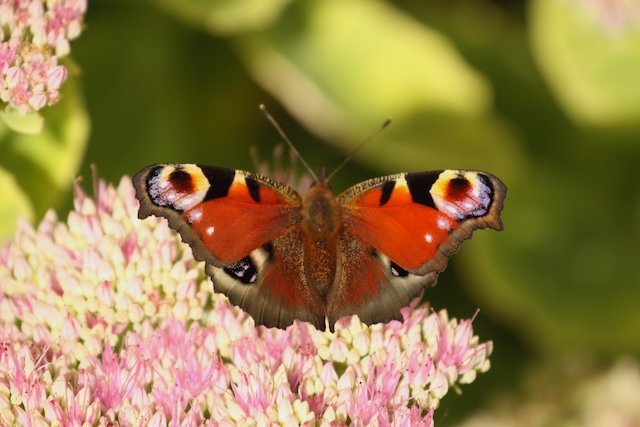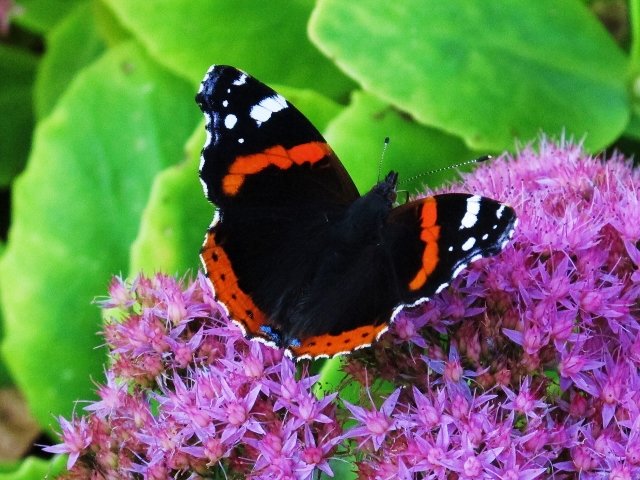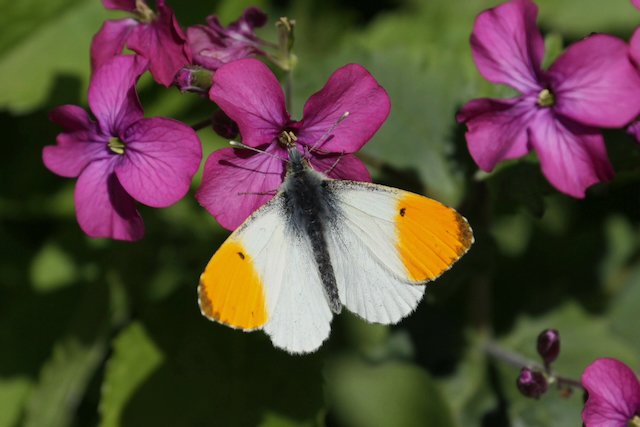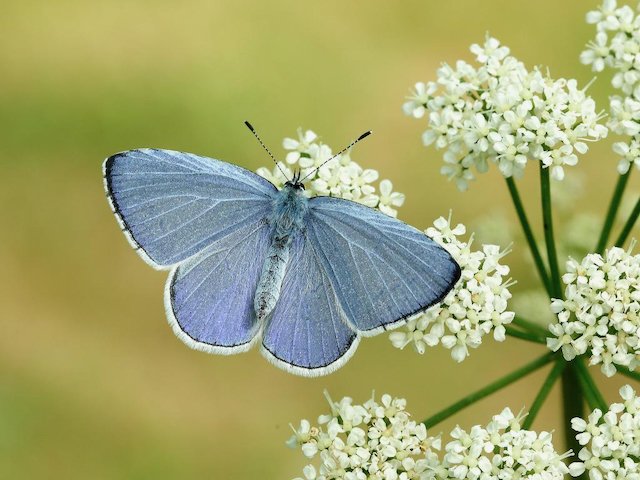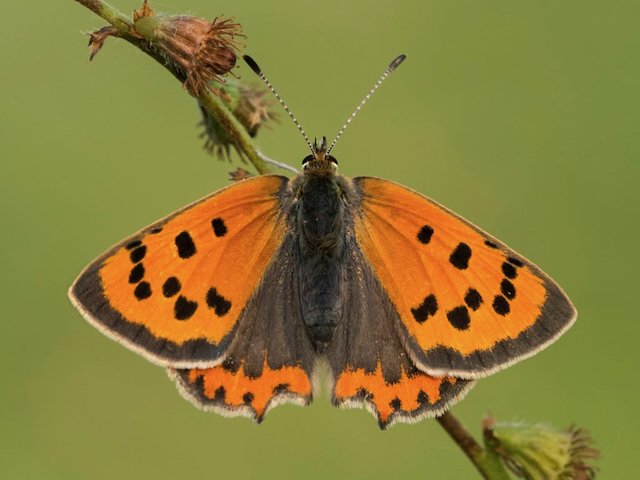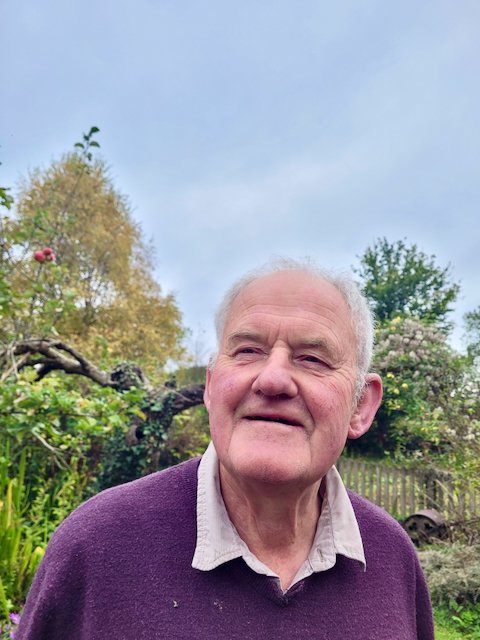Sunderland Point Butterflies
Orange Tip in the Lane: Photo Alan Smith
Butterflies are found all around the Point from spring through to late autumn. Their dash of colour in the sunshine is a welcome sight in the village. Robert Hall, who has a lifelong interest in butterflies, has generously written this summary. Most of the photographs have been taken by Alan Smith of butterflies seen on hedgerows along the Lane, among wildflowers, and in his garden.
Habitats at the Point
There are a number of Point gardens with suitable sources of nectar for the adult stages, such as Buddleia and Sedum.
There are also some sheltered areas where wildflowers are good sources of nectar. For example, there is plenty of bramble in the Lane and on the track beyond the Fish House leading to The Hall. There is also a lovely area of wildflowers just beyond the Green.
Browns
Speckled Wood
Photo Bill Morris
This is a butterfly of shady gardens and wooded hedgerows. Territorial males can be seen spiralling upwards in shady areas. The food plants for caterpillars are the various grasses. Its range has expanded hugely, as noted in records from the Point.
Meadow Brown
Photo Alan Smith
One of the commonest of our brown butterflies, Meadow Brown, is typically found in meadows where Caterpillars feed on the grasses. It can fly on overcast days.
Wall
Photo: Butterfly Conservation
Often found basking on the ground. This butterfly has two broods: the early brood from May to June and the later from July until September. A less common Butterfly.
Nymphalidae
Painted Lady
Photo Alan Smith
This special insect migrates from the Atlas Mountains in Morocco, where one generation spends the winter. They are very strong fliers and may have two or three generations on their way here. It is one of the most widely distributed butterflies in the world. In some years, there is a huge invasion of the U.K.; the last year of such an event was 2019. Some insects lose almost all of their colour whilst migrating, but the specimen shown here looks fresh. The food plant is thistle.
Peacock
Photo Alan Smith
A spectacular insect, this will hibernate and survive our winters. The eye spots will deter predators. Often this is one of the first butterflies to be seen in the spring. A second generation appears in July. The larval foodplant is nettle, where up to 500 eggs may be laid.
Comma
Photo Alan Smith
With its orange colour and distinctive jagged edge, the Comma cannot easily be mistaken for anything else. Like the Peacock, Commas hibernate, often in ivy or amongst leaves, where the jagged wing helps camouflage. They have a rapid darting flight. There is a lighter form, hutchisoni, named after a famous lady entomologist, Emma Hutchinson, who lived in Herefordshire.
Small Tortoiseshell (on Sedum).
Photo Alan Smith
These used to be very common at Sunderland Point but have suffered a decline here and elsewhere. The foodplant is nettle. They are also predated by a parasitic fly, Sturmia belli. Tortoiseshells often hibernate indoors or in outhouses but can sometimes wake up in warmer conditions.
Red Admiral
Photo Alan Smith
The dramatic colours of this insect make it one of the most easily recognisable butterflies found at the Point. Like the Painted Lady, this is an immigrant from North Africa and Southern Europe. However, thanks to our milder winters, there is now evidence that these insects can hibernate.
Whites
Orange Tip
Photo Alan Smith
A beautiful spring butterfly, Orange Tips are single-brooded. Only the males have the distinctive orange tips to the wings, the colours are a warning to potential predators. Their foodplants are the members of the crucifer family such as Cuckoo flower or Garlic mustard. The caterpillars ingest the mustard oils. Quite a common Butterfly
Green Veined White
Photo Alan Smith
This is one of the commoner white butterflies found at the Point. In flight, it can be difficult to tell apart from the Small White, but at rest, the clear veining on the underwings is very characteristic.
Other whites recorded at the Point include Brimstone (rare), Clouded Yellow (a rare migrant), Small White and Large White. The latter two are wrongly called Cabbage Whites, although they do lay their eggs on members of the Brassica plant family such as cabbages.
Blues
Common Blue: a butterfly of meadows. A few have been recorded at Sunderland.
Photo: Butterfly Conservation
Holly Blue: This is quite a common spring butterfly. The spring caterpillars usually hatch from eggs laid on holly, but the later summer brood is laid on Ivy.
Photo: Butterfly Conservation
Small Copper: Another double-brooded insect and is now in decline.
Photo: Butterfly Conservation
Recording
When I was growing up at the Point in the 1950s and 60s, I was aware of insects but did not record them. I remember Small Tortoiseshell as being common, as were the Large White and Small White.
The importance of recording insects cannot be overstated, as butterflies are very good indicators of the state of a particular environment. By systematic recording over a period of years, changes in insect populations can become apparent.
The above commentary is based on a list of casual records sent to me by Veronica Gilchrist. She and Peter recorded butterflies for a good number of years while they lived at Sunderland Point. Their records have informed my remarks. Inevitably, there will be gaps in the information. What is needed is someone to start recording butterflies at the Point and then submit those records for verification to i-record.
For further details :
The UK Butterfly monitoring scheme: ukbms.org
Alternatively, casual records may be sent to me by e-mail randphall@gmail.com
In the case of identification uncertainty, a photograph will be very helpful.
I am happy to act as an interim local recorder for Sunderland Point Butterflies, even though I live 180 miles away in Herefordshire.
Acknowledgement.
With thanks to Veronica Gilchrist and the late Peter Gilchrist for a list of casual records covering the years 1982- 2016.
Robert Hall Sept 2024
At our request Robert very kindly sent us this recent photograph of himself
Robert Hall
Many thanks Robert



